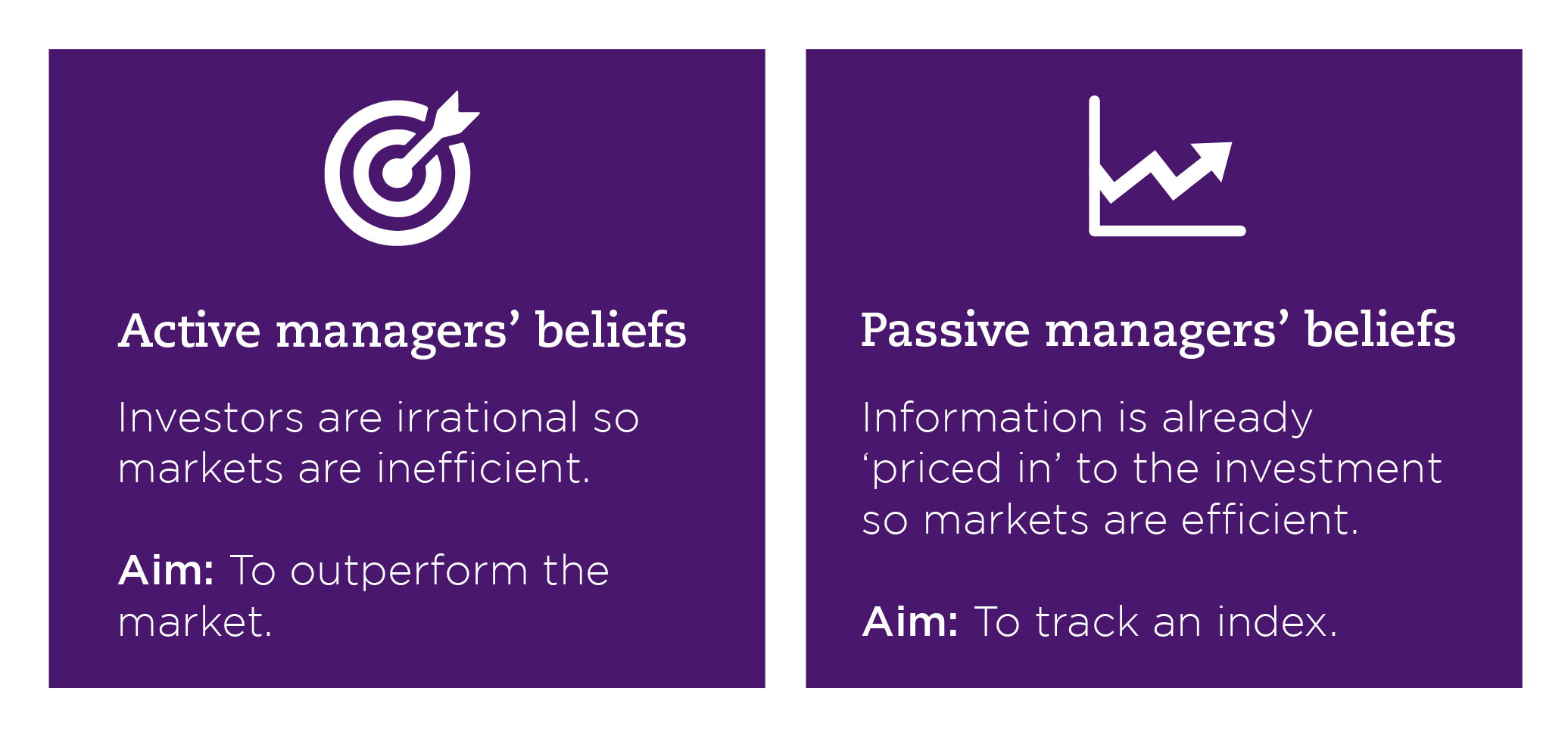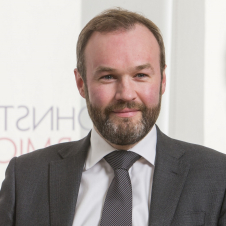Active vs passive investing
There has been a longstanding debate about whether active or passive investing is better for achieving positive returns over the long run. The key element underlying the decision is whether investment managers believe they have the ability to beat the market or not.
There has been a large amount of research into the differing investment strategies with a number of different factors affecting the performance of active and passive investment strategies. So what do the two terms mean?

Market efficiency
In general, market efficiency is considered the key driver when choosing to adopt an active or passive strategy. Markets such as the S&P 500 and the FTSE 100 are considered to be efficient as there are a large number of professional investors conducting research into these markets. On the other hand, emerging markets are usually considered to be less efficient as there are fewer investors carrying out research into these. This provides the opportunity for active managers to spot mispricing opportunities to beat the underlying benchmark.
Market conditions
Another factor that affects the different approaches’ performance is market conditions. Markets typically go through economic cycles where they experience, expansion, a boom, a slowdown and a trough. It has been found that active and passive investments perform well at different points in the economic cycle. Active managers tend to experience better performance in downturns, but passives often benefit more when markets are expanding.
Change ahead?
Passive investing has experienced a long period of strong performance due to the historical low interest rate and inflationary environment, allowing markets to remain relatively stable. However, as we go through 2022 and experience higher inflation, we are likely to continue to see volatility within markets as well as increasing interest rates. This provides active investment managers with the opportunity to come back after a period of weaker performance.
As well as performance, investment cost is an important consideration for investors. Passive investment strategies are lower cost than active investment strategies which involve more investment research to actively pick the stocks to invest in. However, a passive investment strategy is never going to beat its underlying benchmark as it instead aims to replicate it.
At Johnston Carmichael Wealth we believe there is a place for both active and passive investment strategies within a portfolio. That is why we diversify our portfolios investing 50% in active funds through BMO and Cornelian and 50% in passive funds through Legal & General and Vanguard. This allows our investment strategies to benefit from strong performance at different points in the economic cycle reducing volatility while also minimising ongoing investment charges.
Get in touch
If you would like to discuss this further, please don't hesitate to get in touch with myself, a member of our Wealth team, or your usual adviser.
Disclaimer: Johnston Carmichael Wealth Limited is authorised and regulated by the Financial Conduct Authority.
This communication does not constitute investment advice or recommendations to buy or sell investments and you should not place undue reliance on such statements or returns, as actual returns and results could differ materially due to various risks and uncertainties.
While all possible care is taken in the preparation of this communication, no responsibility for loss occasioned by any person acting or refraining from acting as a result of the information contained herein can be accepted by this firm.


